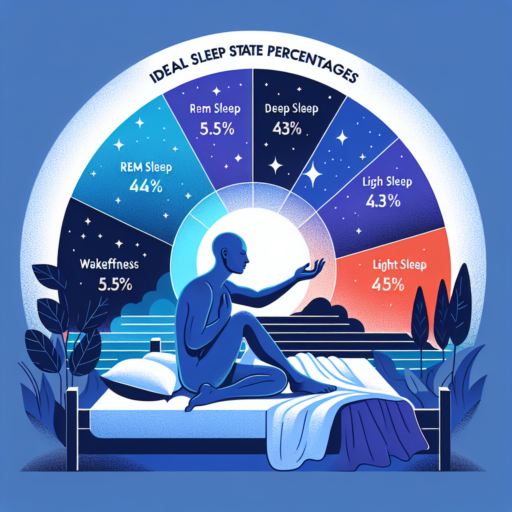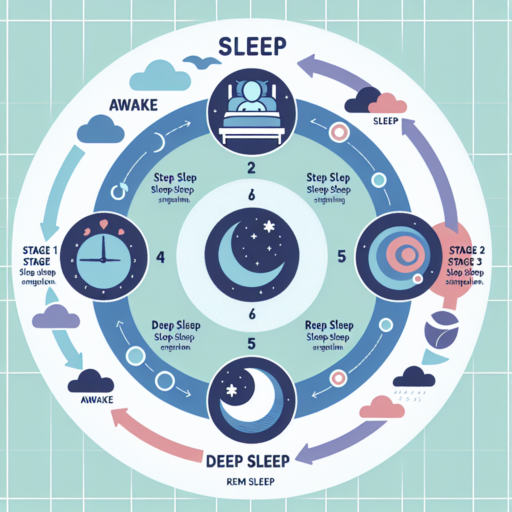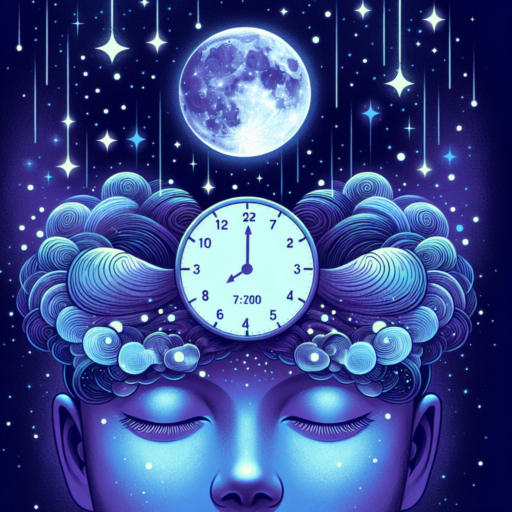What is a healthy sleep stage pattern?
Understanding a healthy sleep stage pattern is crucial for both physical and mental well-being. This pattern, also referred to as sleep architecture, cycles through different stages throughout the night, each characterized by a distinct brain activity pattern. These stages are divided into Rapid Eye Movement (REM) and Non-REM (NREM) phases, which play unique roles in health and recovery.
The Four Stages of Sleep
The NREM phase encompasses the first three stages of sleep. Stage 1 acts as the transition from wakefulness to sleep, where the body begins to slow down. During Stage 2, body temperature drops, and heart rate slows as the body prepares for deep sleep. Stage 3, often called deep sleep or slow-wave sleep, is critical for physical recovery, immune function, and growth hormone release. The REM phase, the fourth stage, is associated with dreaming and memory consolidation, playing a key role in cognitive functions and emotional health.
A healthy sleep pattern cycles through these stages several times throughout the night. The progression from stage 1 to REM typically takes about 90 to 110 minutes, with early cycles containing shorter REM periods and longer deep sleep stages. As the night progresses, REM sleep periods extend, which is why most vivid dreaming occurs in the morning hours before waking.
No se han encontrado productos.
What are good sleep percentages on an Apple Watch?
Understanding the intricacies of sleep percentages on your Apple Watch can greatly enhance your sleep quality and general well-being. The Apple Watch, leveraging its advanced sensors, monitors your sleep patterns by analyzing your movements and heart rate. It breaks down your sleep into percentages, representing the proportion of your time in bed spent actually sleeping versus time awake.
Good sleep percentages typically range from 85% to 95%. This implies that for every hour you spend in bed, you should ideally be asleep for approximately 51 to 57 minutes, allowing for brief awakenings which are a normal part of any sleep cycle. Achieving or surpassing these percentages is indicative of quality sleep, contributing to better health, mood, and cognitive function.
However, it’s essential to interpret these percentages within the context of your personal health and lifestyle. For instance, athletes or individuals with demanding physical jobs might require higher percentages for optimal recovery. Additionally, the Apple Watch offers insights into REM sleep, deep sleep, and light sleep stages, helping you to understand not just the quantity but also the quality of your rest.
Is 20% REM sleep good?
Understanding the importance of REM (Rapid Eye Movement) sleep is crucial to appreciating the 20% figure often cited in sleep studies. REM sleep is the stage of sleep when the brain is most active and when most dreaming occurs. It is associated with memory consolidation, learning, and emotional processing. But does obtaining 20% of your sleep in the REM stage stand as a hallmark of good sleep quality?
Research suggests that adults typically spend about 20% to 25% of their sleep in REM stage. This means that a 20% REM sleep proportion aligns with the average range for healthy adults. During REM, the body experiences increased brain activity, which is crucial for cognitive functions and emotional well-being. However, it’s not just about hitting the 20% mark; the continuity and timing of REM sleep stages throughout the night also play pivotal roles in its benefits.
It’s essential to consider individual needs and factors when assessing the quality of REM sleep. For instance, factors like age, lifestyle, and health conditions can influence the optimal amount of REM sleep. While 20% might be good for most adults, individual discrepancies can make this figure more of a guideline than a one-size-fits-all solution. Therefore, focusing on overall sleep quality, including the duration and consistency of REM sleep, is more beneficial than aiming for a specific percentage.
Is 15% deep sleep good?
Understanding the intricacies of sleep stages, especially deep sleep, is pivotal for maximizing overall health and well-being. Deep sleep, characterized by slow-wave sleep, plays a critical role in memory consolidation, physical recovery, and hormonal balance. The question of whether 15% deep sleep is sufficient, therefore, draws attention to the finer details of sleep quality versus sleep quantity.
Health experts suggest that adults should aim for 20-25% of their sleep to be in the deep sleep stage. Thus, achieving only 15% might be below the optimal range for most adults. This stage of sleep is when the body undergoes most of its healing and regeneration processes. Less than the recommended amount could abbreviate these essential functions, potentially impacting overall health in subtle yet significant ways.
However, the adequacy of 15% deep sleep can vary based on individual health and lifestyle factors. For some people, especially if they achieve high-quality sleep during other stages, this amount might still support the restitution needed. Factors such as age, stress levels, and physical activity play a significant role in determining the ideal sleep architecture for any given person.




